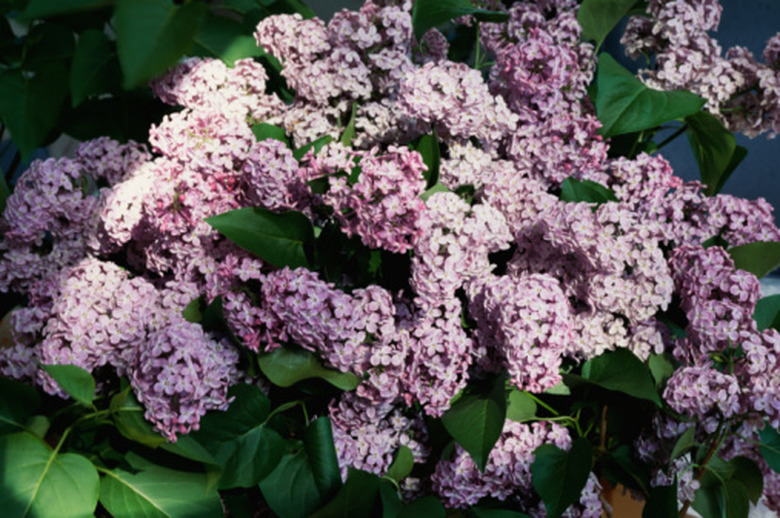How Long Do Lilacs Take To Grow?
Lilacs are old-fashioned garden shrubs most appreciated for their spectacular fragrant flowers. Many species and countless cultivars offer different sizes — from 6-foot dwarf shrubs to 30-foot trees — as well as flower colors, fragrances and bloom times. According to Ron Smith of North Dakota State University Extension, it takes two to three years before a young lilac produces its first blooms. But plant maturity more than age affects flowering, and the optimal size varies by variety. Gardeners impatient for those first huge, fragrant flowers can help their lilacs along by starting them right — and by avoiding common mistakes.
Soil, Sun and Shade
Lilacs do best in full sun and often take up quite a bit of space, so give them plenty of room. A reasonably fertile, well-drained garden loam with a neutral or slightly alkaline pH is ideal, though they'll generally do well anywhere except acidic soils or very heavy clay. Lilacs will drown in standing water. They may fail to bloom if they are planted too deeply — they should be no more than 2 or 3 inches deeper than they grew in the nursery — or if they don't get enough sun. Lilacs may grow in shade, but they probably won't bloom there.
Pruning Lilacs
Prune only in spring, after flowering, because next year's buds and flowers will be produced on this year's growth. If you prune too late in the season — summer, fall or winter — you'll be cutting off the wood that would have produced next year's blooms. Keep in mind that lilacs need minimal care compared to other shrubs. They generally need no pruning for the first few years, and minimal pruning thereafter except to remove dead or damaged growth and to control size. Remove weak wood from the shrub's center to keep light and air circulating.
Fertilizing Lilacs
Don't over fertilize your lilacs, thinking that if a little fertilizer is beneficial then a lot must be better. Too much nitrogen will encourage your lilac to put its energy into growing more vegetation, and it will get taller, wider and greener but won't produce flowers. In general lilacs need very little fertilizer. Fertilize them at planting and in early spring with a 5-10-5 fertilizer.
Winter Kill
Lilacs are very hardy plants. Some varieties can survive cold to negative 60 degrees Fahrenheit. But if you live in a very cold climate and are growing a less hardy cultivar, winter kill can set your shrub back substantially — killing the bud wood that would have produced flowers. In this case you can either move your lilac, provide extra cold protection or find it a new home and buy yourself a more suitable variety.
